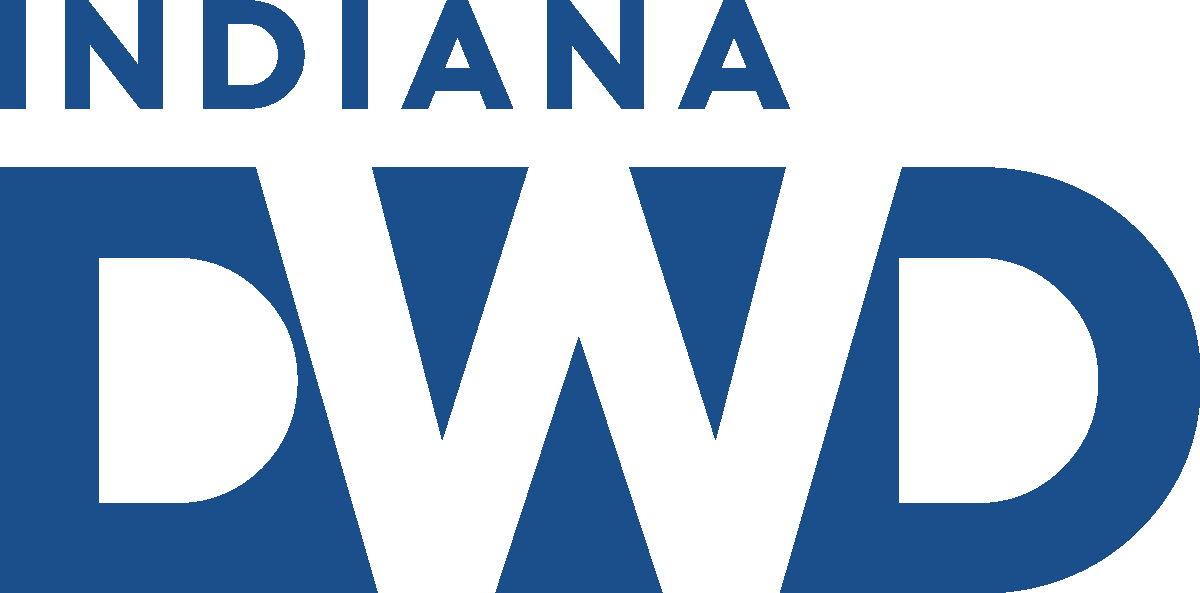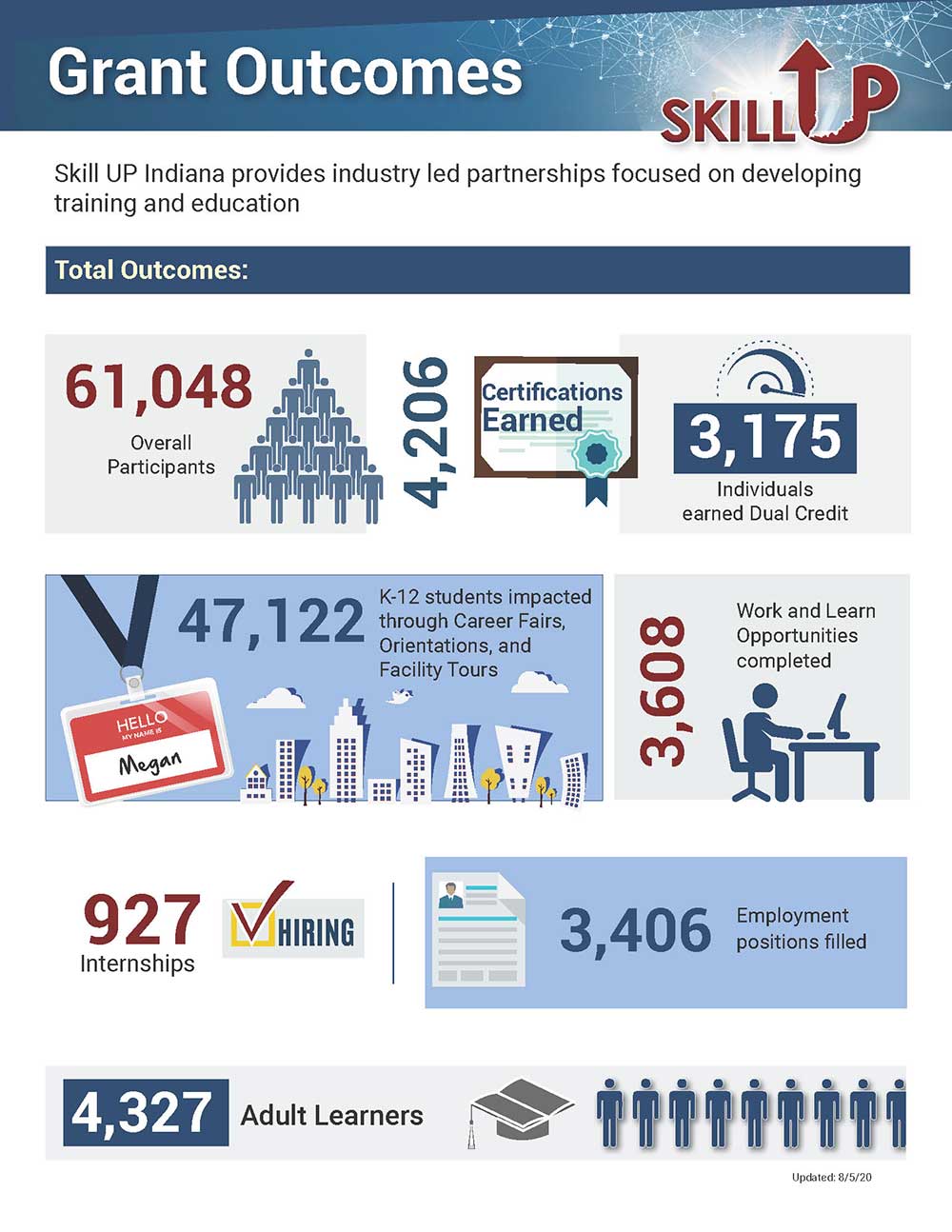THE CHALLENGE AND OPPORTUNITY
Over the next decade Indiana will need to fill more than 1 million jobs. Of those million jobs, more than a third will be new or growth occupations within the state. As the nature of work continues to change at an accelerated pace, the workforce will need new skills to meet the challenge at all levels of education. It is estimated that nearly 30,000 job openings per year will require an industry-recognized certificate/certification in addition to a high school diploma. Approximately 13,500 certificates are earned annually in Indiana in either high school or post-secondary, but only 9,200 of these certificates are in high-demand, high-wage (HDHW) fields. DWD has identified more than 100 occupations which align with many of these opportunities.
Building on this, DWD is offering Skill Up grant funding during the next biennium to support Innovation Networks. Innovation Networks are centered around employers, educators, economic and workforce development partners, as well as other critical community partners in order to skill up students, adults, and incumbent workers within a regional labor market. Innovation Networks improve alignment of future (projected) employer demand and current and future workforce (talent) supply. These networks are data driven, focusing on the 109 In Demand Occupations outlined on Indiana’s Regional Labor Market Dashboard, or possible emerging occupations applicable to the area, and focus on designing effective strategies to ensure that Indiana communities have a strong talent pipeline.
THE VISION
Create a series of Innovation Networks throughout Indiana driven by the needs of employers. Innovation Networks are partnerships among local employers, educators, community organizations, workforce and economic development partners, and others all working in collaboration to align community education resources (K-12, career and technical education, adult education, higher education, and incumbent worker training programs) with the skill and talent needs of the area’s industries. These include education and training providers committed to leveraging shared resources, teaching against the same set of skills and competencies, and serving all Hoosiers (including secondary students, post-secondary students, adult education students, and incumbent workers), while avoiding duplication of efforts and fostering collaboration around this work.
Click here for Round 1 and Round 2 information.

